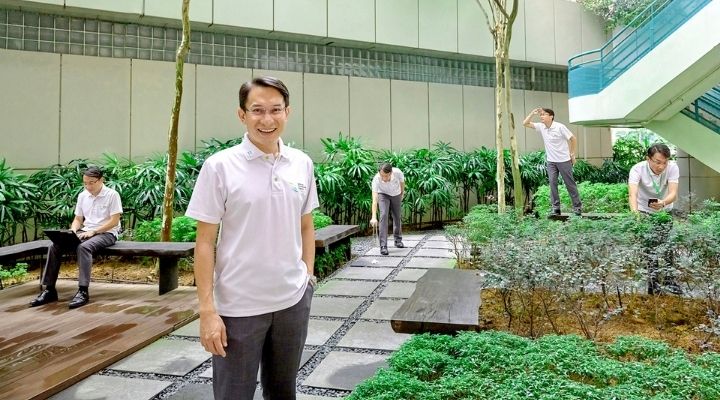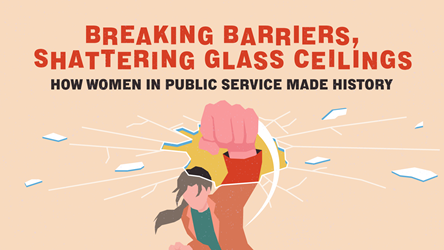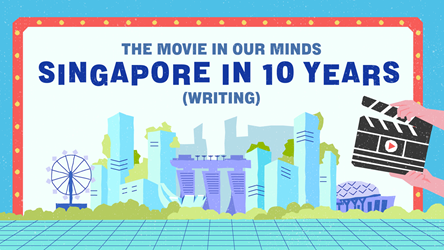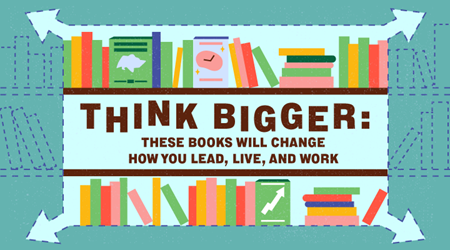New Ways To Keep Singapore Spick and Span
At the National Environment Agency, Mr Halmie Hussein Mattar ramped up the use of technology and oversaw organisational moves to make the work of keeping Singapore clean more effective.

Catching culprits behind high-rise littering can be a lot like detective work.
First, a National Environment Agency (NEA) officer receives a feedback with photographs of the litter in the HDB estate. Next, one has to narrow down where the litter originated from and advise the occupants to refrain from such inconsiderate acts, which takes tireless door-knocking on hundreds of units, sometimes in the evenings when most people are at home.
The process for identifying culprits could take anywhere between weeks and months. Identifying blocks and units that persistently have high-rise littering issues is challenging, given that there are over 10,000 HDB blocks around the island.
That was the biggest bugbear Mr Halmie Hussein Mattar has had to face in his two years of managing high-rise littering issues.
Frustrated by the gruelling and time-consuming process, Halmie had the brainwave of harnessing technology to make the process more efficient and effective for the Video Surveillance Section, a lean force of officers who would manage camera deployments, investigations and enforcement of high-rise littering offences across Singapore.
“While we had constantly increased our surveillance camera supply to meet the growing demand, we could not keep doing it indefinitely,” explained Halmie, who is the Director of the Sanitation & Compliance Division at the NEA.
NEA officers started using robotic process automation for repetitive tasks and a Business Intelligence System for data analytics. A “detailed and precise intelligence” approach has helped them to strategically map and target HDB blocks with persistent high-rise littering feedback and where to prioritise camera deployments.

New Ways of Working
This data analytics drive was part of Halmie’s bigger push to introduce new ways of working at the Environmental Public Health Operations Group, where he played a key role in forming a new Enforcement Unit to strengthen enforcement for public health island-wide as part of the group’s reorganisation in April 2019.
He first had the idea to push new concepts, and make use of statistical analysis, rapid deployment and GPS tracking, while building on the concept of “Think Big, Start Small, Act Fast.”
For his efforts in driving these technological and organisational changes, Halmie was nominated for the Public Sector Transformation Award Exemplary Leader Award.
In setting up NEA’s new Enforcement Unit, Halmie assembled a diverse team of officers across different divisions and also through recruiting from external sources.
It was a “fine balance” in allowing the team flexibility to try new things and boundaries but also setting standard operating procedures and processes for a strong foundation. What helped was that everyone had “a positive mindset to make it work,” said the 44-year-old.

Halmie also played a pivotal role in merging two regional offices into the Western Regional Office in just six months, also as part of the reorganisation in 2019 where five Regional Offices were restructured to three. This was part of an overall push to streamline operational processes to meet rising public expectations.
The reorganisation was a “massive one”, involving the physical movement of 200 staff across three locations across the island, he recalls.
Managing Change in Organisations
For Halmie, the priority was to make the transition as seamless as possible for the staff and to ensure that “everyone had enough time to mentally and physically prepare for the move and change,” he said.
Striving to keep that personal touch, he engaged every one of the 200 staff to explain the rationale behind the transformation. He held multiple consultation sessions with the senior managers and managers, followed by small group discussions with supervisors and their teams.
In each session, he ensured that groups were kept to 15 people, so that people could feel comfortable speaking up candidly about their concerns. They peppered him with questions on the new changes, structures and reporting channels.
"They had concerns such as, whether we could be flexible on starting hours as they would need a longer time to travel from their home to the new office, or how they were going to move their items to their new location."
"It was important that we sat down with them and address their concerns," said Halmie.
Even choosing a date for the physical move had to be carefully planned, as staff were busy with the peak of dengue operations.
In the reorganisation, the task-oriented mindset came first, as we had to be clear about the tasks, changes and outcomes before we could “communicate to the staff clearly, right down to the details,” he said.
From there, we would naturally be more people-oriented approach. “I view good administration as a backbone to a positive experience in organisational change,” said Halmie. “Listen to staff, put ourselves in their shoes and aim to resolve, mitigate, or manage it.”
Tips for Managing Change
- A People-Oriented Approach Requires Clarity
-
Be crystal clear about the changes and intended outcomes first before communicating the details with other staff in the organisation.
- Keep a Personal Touch
-
For a seamless transition, engage all personnel with different approaches, such as consultation sessions with management, and small group discussions with supervisors and their teams.
- Learning Can Take Place Anywhere
-
Constantly observe others around you, reflect on what can be learnt and put the lessons into practice.
A Career Filled With Learning and Change
No stranger to pioneering change, Halmie has also led a team of NEA officers to improve the cleanliness of the Boon Lay constituency. In 2018, the team won the Municipal Services Awards for their efforts and their close collaborations with the West Coast Town Council and its grassroots leaders.
Halmie attributes his achievements to a passion for lifelong learning, and he has so far earned three diplomas and three degrees.
His first degree in engineering degree, he said, shaped his systematic thinking for processes. This was followed by Master’s degrees in Business Administration and Corporate Strategy, which helped him learn to “frame issues”.
To him, learning can take place anywhere. To be a better leader, he observes other leaders’ management styles and finds lessons in them.
"Skills are not just acquired through formal study, courses or the classroom setting, but the constant observations of those around you, learning and practising it. All it takes is the discipline to observe, reflect and practise it," he said.

To get more stories like this, subscribe to the Challenge Telegram channel.
- POSTED ON
Sep 15, 2021
- TEXT BY
Toh Ee Ming
- PHOTOS BY
Teck Lim









